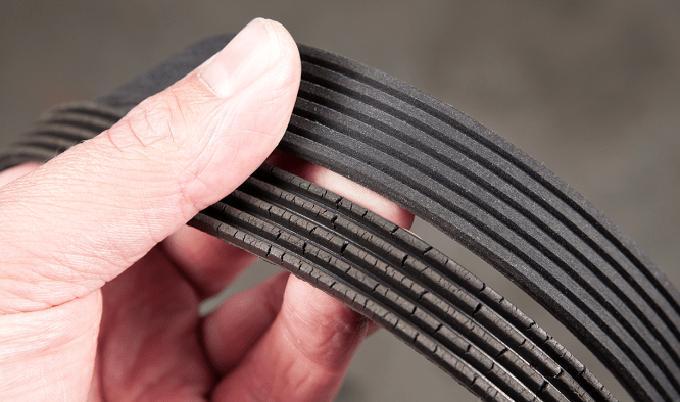The serpentine belt is one of the most important components in your car. As its name suggests, the serpentine belt is a long, winding rubber belt that loops around spinning engine components. It’s typically made of high-quality reinforced rubber and has multiple V-shaped grooves that run vertically along the belt length.
The serpentine belt delivers mechanical power to critical engine accessories — namely the alternator, the power steering pump, the air conditioning compressor, and (sometimes) the water pump.
Because of what it powers, it’s sometimes referred to as an:
- Accessory drive belt
- Accessory belt
- Alternator belt
- Fan belt
What Does The Serpentine Belt Do?
Belts are one of the most crucial moving parts of your engine. They drive the alternator, water pump, and power steering pump, among other things. If any of these components cease to function, your car could face serious, expensive problems – from loss of engine coolant to your engine seizing up. But fortunately, belts and hoses are relatively easy to check – if you know what to look for.
Belt Inspection
The first step in keeping your belts healthy and functioning is being able to spot the problems ahead of time. The following things can indicate problems with your belts:
- You hear a squealing noise when you start the engine.
- You hear a squealing noise when the wheel is turned all the way in either direction (usually when parking).
- When the car is idling, there is a constant slow slapping noise.
- You hear any sort of whirring or grinding noise while the engine is running.
What Are The Symptoms Of A Faulty Belt?
You’ll know there’s a potentially bad serpentine belt in your engine bay when these symptoms crop up:
- A chirping or squealing noise: These sounds from the engine bay may indicate a loose belt that’s slipping or a belt and pulley that aren’t functioning correctly. It might be more noticeable when you’re turning a corner when higher torques are needed.
- There’s a noticeable vehicle performance loss: Your steering becomes heavy as the power steering pump fails. There’s also a sudden battery drain as the alternator isn’t charging correctly, or worse, your engine stalls.
- Signs of belt wear: An old belt will likely display cracking, glazing, or fraying — which all point to imminent belt failure.
- The Check Engine light pops on: this malfunction indicator light will glow whenever any engine issue is detected, from a compromised cooling system to low brake fluid levels.
If any of these serpentine belt issues appear, the wisest thing is to get it checked by a professional mechanic and maybe get a new serpentine belt.
How Can I Easily Get A Serpentine Belt Replacement?
Once a month, you should check the belts in your car for any visible signs of wear, and also for tension. Check their undersides for cracking or erosion.
A serpentine belt replacement isn’t the most complex repair to do, but it certainly involves a fair amount of vehicle know-how and more than just a wrench to loosen nuts.
As such, you’ll want a reliable mechanic to switch out your failing serpentine belt for you. Even better, if they’re mobile mechanics, like Auto King, who can install your replacement serpentine belt right in your driveway!
Auto King Mobile Mechanics can come to you for any vehicle repair, service, and inspection needs. Book or Call for a free quote!





